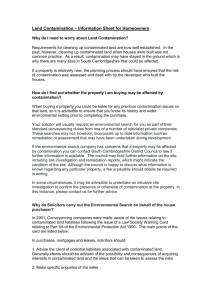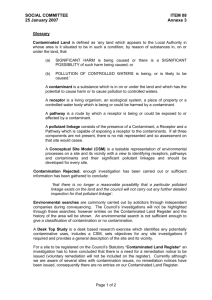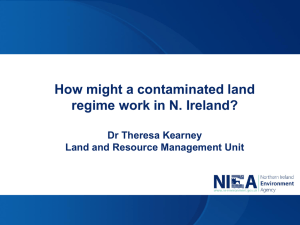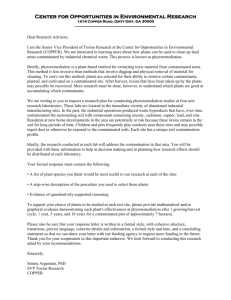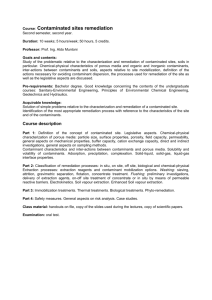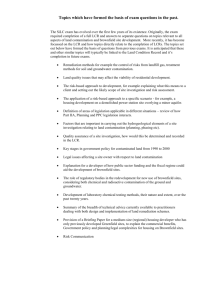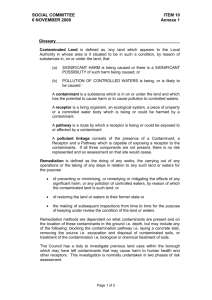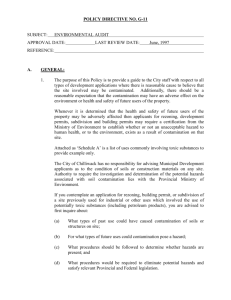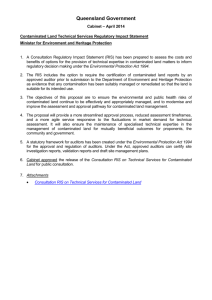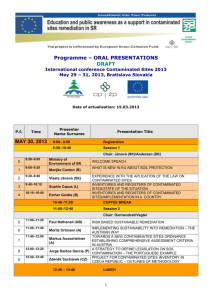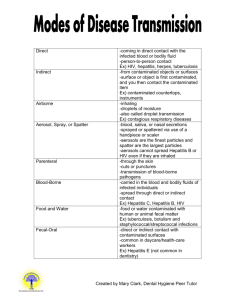CONTAMINATED LAND AND DEVELOPMENT
advertisement
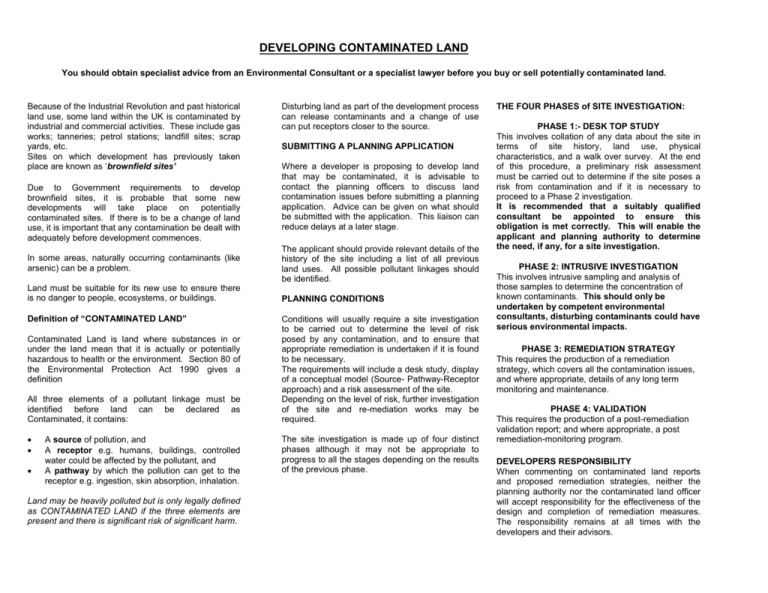
DEVELOPING CONTAMINATED LAND You should obtain specialist advice from an Environmental Consultant or a specialist lawyer before you buy or sell potentially contaminated land. Because of the Industrial Revolution and past historical land use, some land within the UK is contaminated by industrial and commercial activities. These include gas works; tanneries; petrol stations; landfill sites; scrap yards, etc. Sites on which development has previously taken place are known as ‘brownfield sites’ Due to Government requirements to develop brownfield sites, it is probable that some new developments will take place on potentially contaminated sites. If there is to be a change of land use, it is important that any contamination be dealt with adequately before development commences. In some areas, naturally occurring contaminants (like arsenic) can be a problem. Land must be suitable for its new use to ensure there is no danger to people, ecosystems, or buildings. Definition of “CONTAMINATED LAND” Contaminated Land is land where substances in or under the land mean that it is actually or potentially hazardous to health or the environment. Section 80 of the Environmental Protection Act 1990 gives a definition All three elements of a pollutant linkage must be identified before land can be declared as Contaminated, it contains: A source of pollution, and A receptor e.g. humans, buildings, controlled water could be affected by the pollutant, and A pathway by which the pollution can get to the receptor e.g. ingestion, skin absorption, inhalation. Land may be heavily polluted but is only legally defined as CONTAMINATED LAND if the three elements are present and there is significant risk of significant harm. Disturbing land as part of the development process can release contaminants and a change of use can put receptors closer to the source. SUBMITTING A PLANNING APPLICATION Where a developer is proposing to develop land that may be contaminated, it is advisable to contact the planning officers to discuss land contamination issues before submitting a planning application. Advice can be given on what should be submitted with the application. This liaison can reduce delays at a later stage. The applicant should provide relevant details of the history of the site including a list of all previous land uses. All possible pollutant linkages should be identified. PLANNING CONDITIONS Conditions will usually require a site investigation to be carried out to determine the level of risk posed by any contamination, and to ensure that appropriate remediation is undertaken if it is found to be necessary. The requirements will include a desk study, display of a conceptual model (Source- Pathway-Receptor approach) and a risk assessment of the site. Depending on the level of risk, further investigation of the site and re-mediation works may be required. The site investigation is made up of four distinct phases although it may not be appropriate to progress to all the stages depending on the results of the previous phase. THE FOUR PHASES of SITE INVESTIGATION: PHASE 1:- DESK TOP STUDY This involves collation of any data about the site in terms of site history, land use, physical characteristics, and a walk over survey. At the end of this procedure, a preliminary risk assessment must be carried out to determine if the site poses a risk from contamination and if it is necessary to proceed to a Phase 2 investigation. It is recommended that a suitably qualified consultant be appointed to ensure this obligation is met correctly. This will enable the applicant and planning authority to determine the need, if any, for a site investigation. PHASE 2: INTRUSIVE INVESTIGATION This involves intrusive sampling and analysis of those samples to determine the concentration of known contaminants. This should only be undertaken by competent environmental consultants, disturbing contaminants could have serious environmental impacts. PHASE 3: REMEDIATION STRATEGY This requires the production of a remediation strategy, which covers all the contamination issues, and where appropriate, details of any long term monitoring and maintenance. PHASE 4: VALIDATION This requires the production of a post-remediation validation report; and where appropriate, a post remediation-monitoring program. DEVELOPERS RESPONSIBILITY When commenting on contaminated land reports and proposed remediation strategies, neither the planning authority nor the contaminated land officer will accept responsibility for the effectiveness of the design and completion of remediation measures. The responsibility remains at all times with the developers and their advisors.
